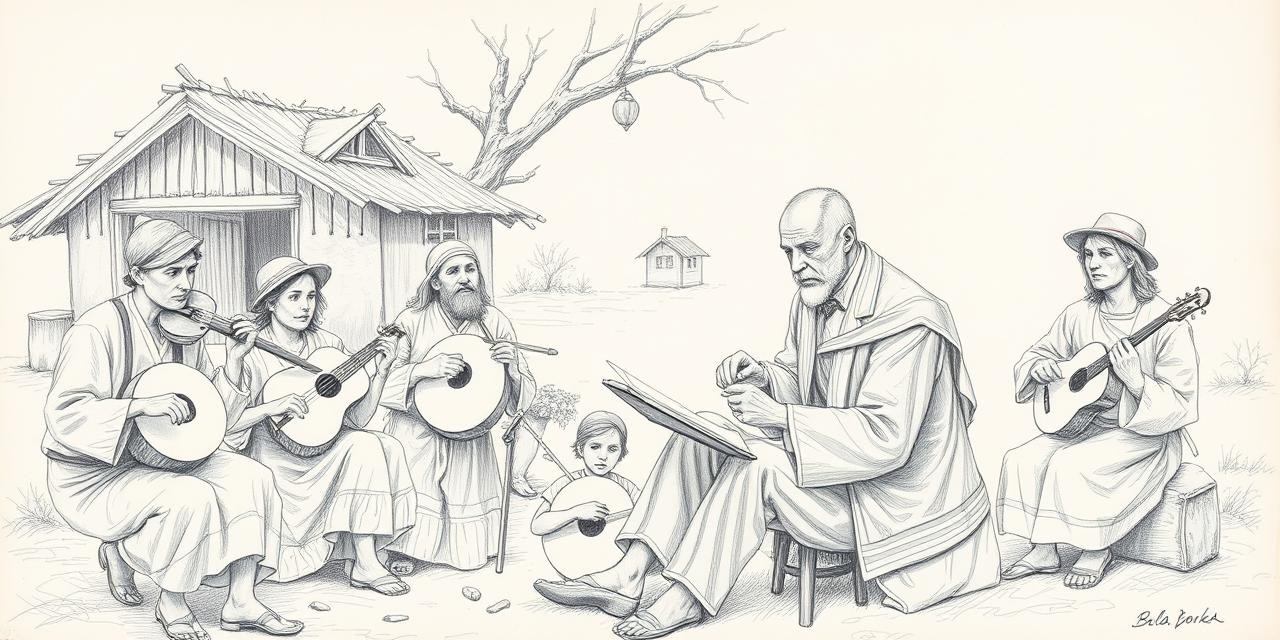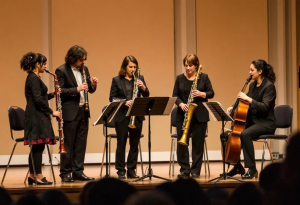Classical chamber music. Think sophisticated, right? But here’s a secret: it’s got a lot in common with the foot-tapping world of folk music. For ages, composers have been pinching melodies, rhythms – the whole vibe, really – from folk traditions. They weave it into their string quartets, piano trios, you name it. The result? Music that feels both timeless and deeply personal.
Why Folk Music? The Secret Sauce
So, why did the big composers bother with simple folk tunes? Because folk music is powerful. It’s raw. It’s about real life – love, loss, the whole shebang. These melodies, passed down through generations, have a way of grabbing you. Simple, yes, but also incredibly moving. And the rhythms? They make you want to dance! For a composer wanting to tap into universal feelings, or paint a picture of a specific place, folk music was – and still is – a goldmine.
Plus, remember the rise of nationalism in the 1800s? Everyone was suddenly super interested in their own country’s culture. Folk music became a symbol of national pride. People started collecting folk songs, studying them… giving composers a whole new toolbox of sounds.
Folk Music’s Greatest Hits: Chamber Music Edition
Let’s dive into some examples. You’ll be surprised how many composers snuck folk music into their fancy chamber works!
Bartók: The Folk Music Detective
Béla Bartók. This guy was obsessed with folk music. He wasn’t just a composer; he was a musical detective, traveling around Hungary and neighboring countries, recording thousands of folk songs. But here’s the cool part: he didn’t just copy and paste these tunes. He absorbed them. He felt their rhythm, understood their melodies. Then, he rebuilt them into his own music. His string quartets, especially No. 4 and 5, are bursting with the energy of Hungarian and Romanian folk music. Think crazy rhythms and melodies that sound both ancient and totally modern.

Dvořák: Bohemian Rhapsody (in a Quartet!)
Antonín Dvořák was another composer who wore his national pride on his sleeve. His String Quartet No. 12 in F major, Op. 96 – the “American” Quartet – is a fascinating mix. He wrote it while living in the United States, and it’s got bits of Bohemian folk music and African-American spirituals. The melodies are simple, like folk songs. The rhythms are often syncopated, a nod to African-American music. It’s a melting pot of sounds!
Brahms: The Subtle Nod to Tradition
Even Johannes Brahms, who some might call a bit of a traditionalist, felt the pull of folk music. He didn’t always quote folk songs directly, but his music often feels like it could be one. The way he uses certain scales, his focus on beautiful melodies, his love of dance rhythms… it all points to a deep connection with folk traditions. Ever heard his Hungarian Dances? Originally for piano, they capture the spirit of Hungarian folk music, and that spirit sneaks into his chamber works, too.
Don’t Forget These Guys…
- Haydn: Sneaking Croatian folk tunes into his string quartets. Clever!
- Vaughan Williams: Fantasia on Greensleeves. Originally for orchestra, but sounds amazing with a smaller group. Based on a classic English folk song.
- Villa-Lobos: His Bachianas Brasileiras. Baroque meets Brazil! He blends old-school counterpoint with Brazilian folk melodies.
From Field Recording to Concert Hall: How It Works
Taking a folk song and turning it into a piece of classical chamber music is harder than it looks. It’s not just about writing down the notes. Composers mess with the melodies, twist them, fit them into classical structures. They might change the rhythm, make the melody longer, or add extra melodies to make it sound richer.
Sometimes, a composer might just use a tiny piece of a folk song as a starting point. They’ll take that little fragment and build a whole new theme around it. Or they might create a brand-new melody that sounds like a folk song. Folk music becomes a spark, inspiring composers to create something new and exciting.
The Story Continues…
Folk music is still influencing classical music today. Contemporary composers are finding new ways to bring folk traditions into their work. This conversation between folk and classical music keeps things fresh. It means that the sounds of the past will keep inspiring music for years to come. You can hear echoes of folk music in concert halls everywhere, reminding us of our roots and the power of music to connect us.
Exploring folk music in chamber music gives you a peek into the creative process. It shows how composers use folk music to express big emotions, paint vivid pictures, and create music that’s both personal and meaningful. So, next time you listen to a string quartet, listen closely… you might just hear the echoes of a folk song.
Folk Music & Chamber Music: Quick Questions
- What’s folk music, anyway? Traditional music, passed down by ear, reflecting the lives of everyday people.
- How did composers learn about it? By listening, traveling, collecting songs… especially when everyone got interested in national identity.
- Is folk music just for chamber music? Nope! It’s influenced all kinds of classical music – orchestras, operas, even songs.
- Are composers still using folk music? Absolutely! Composers all over the world are finding inspiration in folk traditions.

